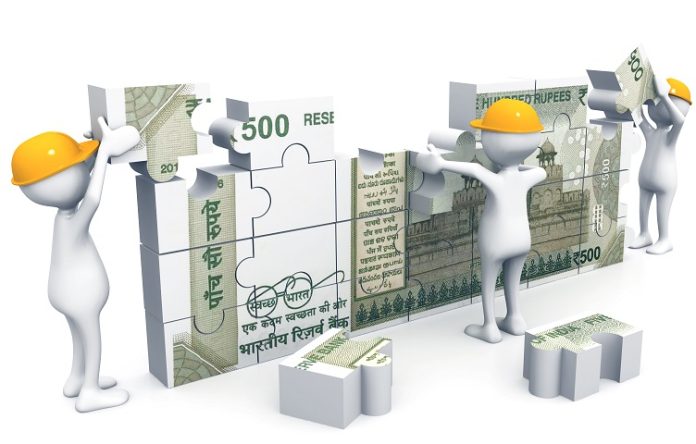Investment conditions in India continue to remain muted. Data point towards an unattractive Investment climate, unenthusiastic investment intentions and unimpressive investment outcomes. Claims made by some analysts that an investment cycle is underway or is imminent are unjustified.
Excess capacities and poor consumer demand continue to plague the investment climate. Reserve Bank of India’s OBICUS shows a capacity utilisation rate of just 60 percent as of June 2021. Save for the June 2020 quarter that was impacted by the severe lockdown, a capacity utilisation of 60 percent is the lowest recorded by the OBICUS. In spite of a healthy growth in power generation recently, plant load factor of thermal plants was around 55 percent during September-October 2021. It used to be 60 percent before the pandemic and above 70 percent earlier. Very low-capacity utilisation is also evident in the financial statements of listed companies. The asset utilisation ratio (sales / net fixed assets) of non-finance listed companies was 1.82 times as of the quarter ended September 2021. In September 2019 it was 1.87 times and in September 2018 it was 2.11.
Excess capacities would not be a constraint if enterprise could sense growth in consumer demand that could absorb additional capacities. But, demand is curtailed because household incomes continue to remain lower than their levels before the pandemic. Average household income in June 2021 was 6.4 percent lower than it was in June 2019. Consumption expenditure fell by a sharper 9.8 percent by a similar comparison. Both, household incomes and consumption expenses have failed to recover to the pre-pandemic levels of income or consumption. This is the biggest hurdle against investments.
The low-capacity utilisation levels and the shrinking of household incomes and therefore of consumer demand renders the investment climate unattractive. In these circumstances it is rational to expect enterprise to be reluctant to propose new investments. CMIE’s CapEx database provides evidence to the effect.
New investment proposals made per quarter in the six quarters before the pandemic averaged at Rs.4.2 trillion. This almost halved to Rs.2.2 trillion per quarter in the six quarters since the pandemic that began in the quarter ended June 2020. Public and private enterprises have rolled back their investment plans substantially. Similarly, it is also evident that enterprises have postponed completing their ongoing projects. Project completions averaged at Rs.1.4-1.5 trillion per quarter before the pandemic. None of the quarters since the pandemic have touched those levels of project completions, yet.
Execution of investment projects may have just got worse in November. This is evident in the data on aggregate orders received by listed companies. Listed companies are required to disclose large orders received for machinery or construction projects. In November 2021, only 27 companies announced that they had received orders for machinery or construction projects. This is lower than the average of 30 companies that make such announcements in a month. In November 2021, the total orders received by these companies were worth Rs.122 billion. The average value of orders per month since April 2020 is nearly three times at Rs.326 billion.
The sharp drop in new investment proposals and in orders for machinery and construction projects are evidence of the unenthusiastic investment intentions we mentioned earlier.
Finally, what do investment outcomes look like around now? Quarterly GDP estimates tell us that gross capital formation grew by an impressive 17.3 percent in real terms. But, much of that growth is actually investments in gold which is essentially unproductive. Gross fixed capital formation, which is a far better indicator of investments, grew by a modest 11 percent compared to a year ago. But, a-year-ago had pencilled a fall of 8.6 percent. So, the 11 percent growth is hardly anything to write about. The poor outcomes on investments can be gauged from the fact that gross fixed capital formation in the September 2021 quarter was a meagre 1.5 percent higher than it was two years ago in the September 2019 quarter.
Another evidence of the poor outcomes on investments can be seen in the financial statements of listed companies. Net fixed assets of non-finance companies grew by a mere 4.9 percent y-o-y as of September 2021. This very modest growth at a time when inflation (WPI) is over 11 percent indicates that fresh capacity creation was weak or almost absent. Net fixed assets of manufacturing companies grew by 4.1 percent while the wholesale price index of manufactured products grew by 11.5 percent.
Claims that companies will start investing because they have deleveraged recently is a facile argument. Indian companies did not have a balance sheet problem in borrowing. The debt-to-equity ratio of listed companies was 0.56 times as of September 2021. It was the same in September 2020 and it was lower in September 2019 or even September 2018. So, there is no evidence of deleveraging of the corporate sector in the last three years. But, the debt-equity ratio has always been adequately low to facilitate additional borrowing. The highest debt-equity ratio in the last ten years was 0.64 times in September 2013. Even this left enough room for listed companies to borrow.
The balance sheet of companies is not the challenge, as it never was. The problem as explained above is in the investment climate.








